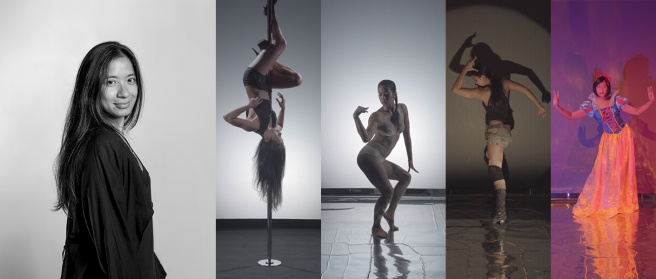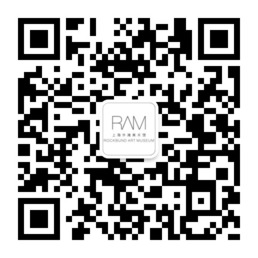Eisa Jocson Wins The HUGO BOSS ASIA ART Award 2019
(SHANGHAI – November 6, 2019) Larys Frogier, Director of the Rockbund Art Museum (RAM), Chair of the HUGO BOSS ASIA ART Jury, and Jerome Bachasson, Managing Director of HUGO BOSS Greater CHINA, announced today that Eisa Jocson has been awarded the HUGO BOSS ASIA ART Award for Emerging Asian Artists 2019. Eisa Jocson, who was selected from a shortlist comprising Hao Jingban, Hsu Che-Yu and Thảo-Nguyên Phan, will receive a stipend of RMB 300.000. The works of all four finalist artists are displayed at RAM from October 18, 2019 to January 5, 2020.
Larys Frogier said: “With the precious contribution of the HUGO BOSS ASIA ART 2019 nominators and jury members, we are extremely honored and proud to present the award to Eisa Jocson from Philippines, Manila. As a female artist conceiving stunning and always unexpected art projects from performance to sound and visual installations, Eisa Jocson has already a unique position in the contemporary art scenes in Asia and globally. The artist creates multilayered images, revisiting the vocabularies of dance and music, as well as infiltrating local popular references and contemporary visual art formats. It is with great intelligence that Eisa Jocson engages today’s life and art, always repositioning her own practice into the unknown, going beyond fixed identities, genders and frontiers.”
“We sincerely congratulate Eisa Jocson for winning the HUGO BOSS ASIA ART Award 2019. It is wonderful to see how the project provides a platform for your artists and their work,” stated Dr. Hjördis Kettenbach, Head of Cultural Affairs at HUGO BOSS. “Our gratitude also goes out to the jury and the Rockbund Art Museum for their dedication to this project.”
The Winning Artist
Eisa Jocson was born in 1986 in Manila, Philippines. She is a choreographer, dancer, and visual artist based in Manila. As a visual artist with previous training in ballet, a key concern in her art is public performance work, such as in the service and entertainment industries. In representations of the Phillippine body, Jocson often explores how the body challenges its own malleability, and how it adapts to different social environments and economic relationships. She takes a deep look at the effects of conditioning and limitations on the body through societal conventions, forms of economic migrant labor or through the myths that perpetuate definitions of how movements or gestures should be performed or expressed by people from widely different social groups.
Her new work, Super Woman KTV (2019) is a karaoke video combining song and dance performances inspired by folk rituals, oral traditions, and contemporary pop songs. Through studying the different emotional registers and cultural meanings of popular songs in the Filipino culture, Jocson uses them to build a growing archive of key extracts, phrases, and dance routines. For the artist, they represent collective notions of femininity for different generations in the Philippines. As an on-going project, Jocson uses this archive to ambitiously map out a contemporary adaption of the ancient ‘epic’ tradition, in an attempt to preserve the memory of such epics. Through song and dance performances influenced by rituals predating the colonial era, Jocson channels the spirituality of this collective ritual into a trajectory that is connected with feminine empowerment in the contemporary era.
In the work Corponomy (2019) Jocson reflects on archival material from previous performances from her diverse practice, which are remixed and reincorporated into a new project. Comprising an intertextual installation of dance sequences, karaoke videos, and live performances by her own troupe, Jocson mimics a wide repertoire of genres attributed to Philippine migrant workers operating in the entertainment and service industries across the world. From pole dancing to macho dancing, to female hostesses and Disney princesses, the audience is led through an immersive experience of sound, text, and movements as they morph into one another. The term ‘corponomy’ is one that Jocson uses to describe the body as it adapts to different economic situations, as well as the dynamic relationship between marginalized communities and mass culture. By conditioning her body to fit into these diverse roles, Jocson is able to re-route the original functions of these dances, contemplating the representational possibilities of migrant Filipino bodies, and bringing such contemplations to the public sphere.

About the public programs
A series of public and education activities including performances, workshops, lectures and walk & talk will be held alongside the Award to further explore the intellectual and social contribution of the finalist artists. Parallel to the exhibition, the public and educational programs make up another platform of the Award that is committed to exploring and presenting different artistic and social contexts in present-day Greater China and Southeast Asia. This will extend, complement and enrich the topics generated by the finalist artists while connecting with the general public. The exhibition of works by the four finalists of HUGO BOSS ASIA ART Award 2019 runs through to January 5, 2020, curated by Billy Tang, Senior Curator of Rockbund Art Museum. For the duration of the exhibition, audiences will be able to enjoy the augmented reality guided tour with the curator on mobile devices.
For more information, please visit: hugobossasiaart.org/en/
About Rockbund Art Museum
For over nine years Rockbund Art Museum has been at the forefront of the growing contemporary art scene in China, presenting world-class programs in a unique museum setting. A boutique Museum of the utmost quality, RAM holds a unique position within Shanghai’s continually expanding cultural scene. The Museum is located within the Bund district and housed in an exquisite heritage Art Deco building, which was renovated by architect David Chipperfield before opening in 2010.
The museum’s exemplary curatorial, education and research programs showcase acclaimed and emerging Chinese and international artists. RAM presents a bold and pioneering program of three exhibitions and a special project “RAM HIGHLIGHT” per year, exploring and realizing artists’ most ambitious projects and working with them to tailor exhibitions to the Museum and to the Shanghai context, often with a large proportion of works being new commissions. RAM devises, produces and curates its program in-house, in conjunction with carefully selected international collaborations of the highest quality.
For more information, please visit: www.rockbundartmuseum.org
About the HUGO BOSS Global Arts Program
Contemporary art is an integral part of the HUGO BOSS corporate culture. In conjunction with the Solomon R. Guggenheim Museum the Group established the HUGO BOSS PRIZE in 1996 which has evolved into an internationally renowned art award. The prize was complemented by the HUGO BOSS ASIA ART Award in 2013. HUGO BOSS has also supported numerous international exhibitions. To date, these have presented works by Ross Bleckner (1995), Georg Baselitz (1995 and 1996), Dennis Hopper (2001), James Rosenquist (2003), Olafur Eliasson (2005) and Josephine Meckseper (2007). In 2012, HUGO BOSS sponsored the solo exhibition of Jeff Koons at the Fondation Beyeler in Switzlerland. Since 2014, the Group has started a special partnership with the Vitra Design Museum in Weil am Rhein, supporting exhibitions like “Konstantin Grcic Panorama” (2014), “The Bauhaus #itsalldesign” (2015/2016) and “An Eames Celebration” (2017).
About HUGO BOSS
The HUGO BOSS Group is one of the leading companies in the upper premium segment of the apparel market that focuses on the development and marketing of premium fashion and accessories for men and women. The product portfolio offers menswear, womenswear, as well as licensed fragrances, eyewear, watches, children‘s fashion, home textiles and writing instruments.
Further information on the company can be found at group.hugoboss.com
